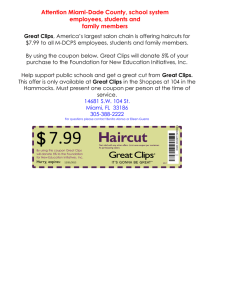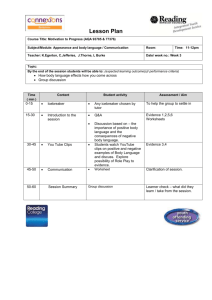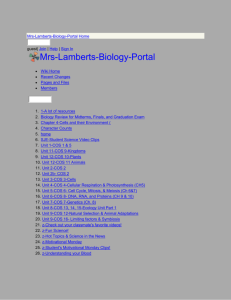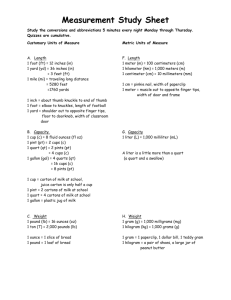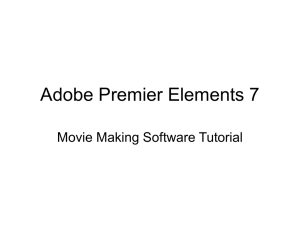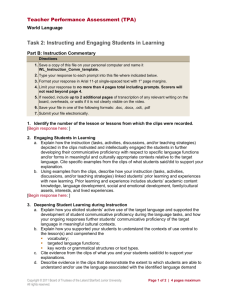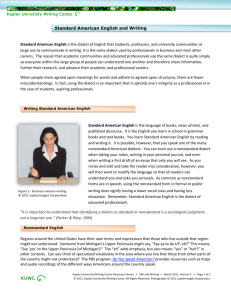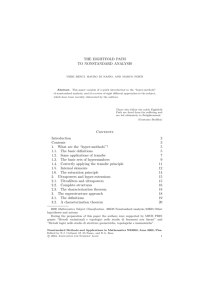Measurement - Baltimore County Public Schools
advertisement
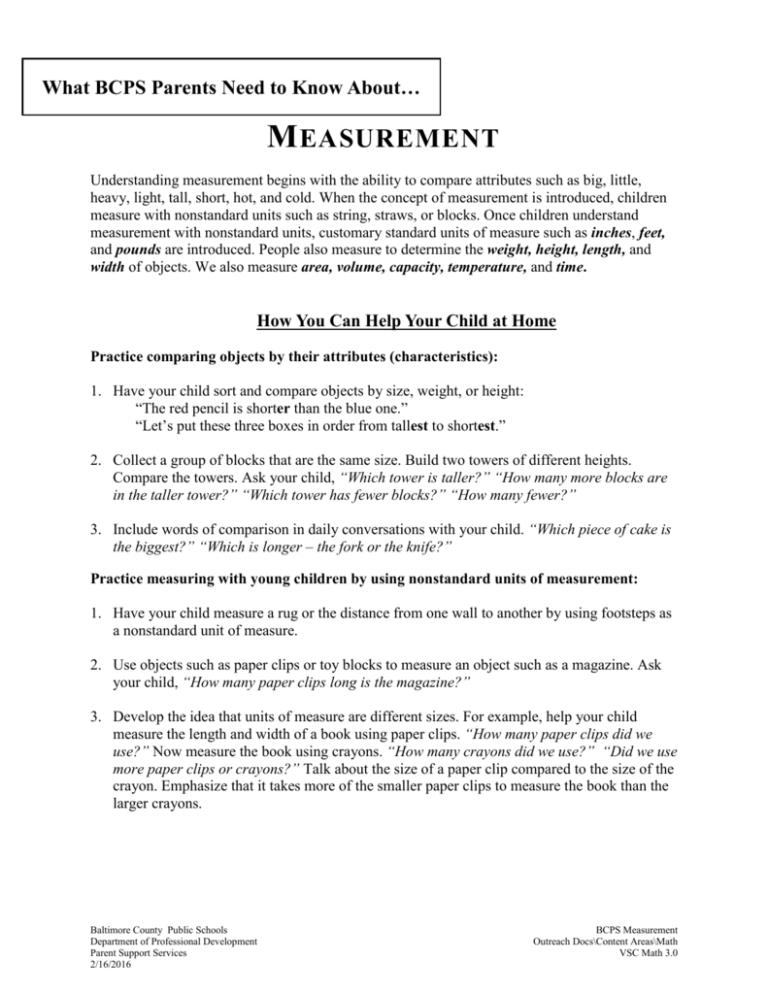
What BCPS Parents Need to Know About… M EASUREMENT Understanding measurement begins with the ability to compare attributes such as big, little, heavy, light, tall, short, hot, and cold. When the concept of measurement is introduced, children measure with nonstandard units such as string, straws, or blocks. Once children understand measurement with nonstandard units, customary standard units of measure such as inches, feet, and pounds are introduced. People also measure to determine the weight, height, length, and width of objects. We also measure area, volume, capacity, temperature, and time. How You Can Help Your Child at Home Practice comparing objects by their attributes (characteristics): 1. Have your child sort and compare objects by size, weight, or height: “The red pencil is shorter than the blue one.” “Let’s put these three boxes in order from tallest to shortest.” 2. Collect a group of blocks that are the same size. Build two towers of different heights. Compare the towers. Ask your child, “Which tower is taller?” “How many more blocks are in the taller tower?” “Which tower has fewer blocks?” “How many fewer?” 3. Include words of comparison in daily conversations with your child. “Which piece of cake is the biggest?” “Which is longer – the fork or the knife?” Practice measuring with young children by using nonstandard units of measurement: 1. Have your child measure a rug or the distance from one wall to another by using footsteps as a nonstandard unit of measure. 2. Use objects such as paper clips or toy blocks to measure an object such as a magazine. Ask your child, “How many paper clips long is the magazine?” 3. Develop the idea that units of measure are different sizes. For example, help your child measure the length and width of a book using paper clips. “How many paper clips did we use?” Now measure the book using crayons. “How many crayons did we use?” “Did we use more paper clips or crayons?” Talk about the size of a paper clip compared to the size of the crayon. Emphasize that it takes more of the smaller paper clips to measure the book than the larger crayons. Baltimore County Public Schools Department of Professional Development Parent Support Services 2/16/2016 BCPS Measurement Outreach Docs\Content Areas\Math VSC Math 3.0 Practice measuring by using standard units of measure: 1. Point out tools commonly found around the house that are used for measuring (examples: scales, cups, rulers, and thermometers). 2. Familiarize your child with different vocabulary words used in measuring. Capacity: cup, pint, quart, liter, gallon Length: inch, foot, yard, millimeter, centimeter, meter Distance: mile, kilometer Temperature: degree, Fahrenheit, Celsius Time: seconds, minutes, hours, days Weight: ounce, pound 3. Allow your child to experiment with a variety of measurement tools. Discuss the units of measurement that are used. Grocery shopping: ounces, pounds, gallons Baking/cooking: teaspoons, cups, temperature Outdoor temperature: degrees Sewing: inches, yards Building/repairs: feet, yards, inches 4. Help your child learn how to tell time in intervals of hours and half-hours using analog and digital clocks. 5. Help your child learn that we measure time just as we measure other things. The tools used are watches, clocks, and calendars. Some units of measuring time are seconds, minutes, hours, days, months, and years. 6. Help your child to recognize time by identifying days of the week and by using terms such as yesterday, today, tomorrow, morning, afternoon, night, before, and after. 7. Help your child read a calendar to identify days of the week and months of the year. Within the month of your child’s birthday, ask how much longer it is until his or her birthday. 8. Share with your child the use of a thermometer to measure temperature. Temperature is measured in degrees Fahrenheit and Celsius. The Fahrenheit scale is used to measure temperature in the United States. 9. Show your child how heavy certain items are by using the standard unit of weight, which could be ounces or pounds. A good tool to use to measure how much something weighs is a scale to measure the number of ounces or pounds. 10. Share with your child how capacity is another standard unit of measurement that is used in daily activities. Capacity is the amount of liquid a container can hold. Some standard units of capacity are teaspoon, tablespoon, cup, pint, quart, liter, half-gallon, and gallon. Help your child explore the volume of containers by observing how much they hold. Allow your child to engage in water play. Place plastic measuring cups in the tub or sink. “Which of these two containers holds more water?” Baltimore County Public Schools Department of Professional Development Parent Support Services 2/16/2016 BCPS Measurement Outreach Docs\Content Areas\Math VSC Math 3.0

